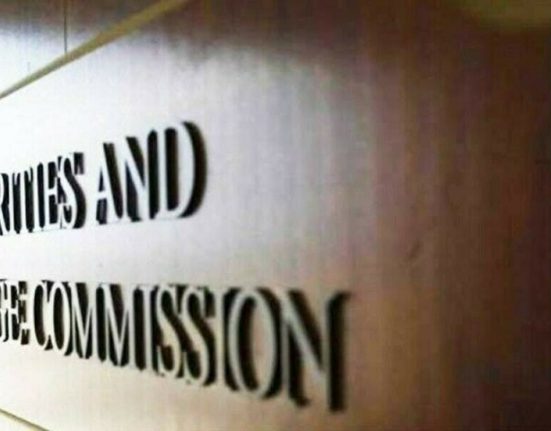Sustainable debt issuance has hit a record level this year, as investors pile into green bonds and other debt tracking similar themes as a way of signalling their environmental credentials while also locking in an attractive yield.
Debt including green, social, sustainable and sustainability-linked bonds, raised $273bn in the first quarter of this year, according to a report published on Wednesday by the non-profit Climate Bonds Initiative.
Issuance of green bonds — used by countries or companies to pay for environmental projects — jumped 43 per cent on the previous quarter to $195.9bn, attracting higher inflows than newer forms of sustainable debt. Green bonds are on track to hit a total of $1tn of issuance this year, CBI predicted.
Like more conventional fixed income, demand for sustainable debt has been boosted by high interest rates. But it has also been helped by what some fund managers argue is the erosion of the so-called “greenium” — a discount in the cost of borrowing that issuers of green bonds can enjoy.
This means that, in many cases, investors can put money into sustainable debt without sacrificing much, if anything, in terms of yield.
“Investors want this, because even if you’re getting it [the green bond] at the same price . . . you’re getting the green label for free,” said Alan Siow, co-head of emerging market corporate debt at asset manager Ninety One.
“For these issuers, it’s rational. They’re printing at the same price or better in green,” he added.
After a sluggish 2023, the US was the largest single-country source of green bonds in the first quarter of this year, according to CBI, with a combined $27.6bn in issuance. In March, Baltimore-based Constellation Energy became the first US company to issue a green bond that could be used to finance nuclear energy. Constellation planned to use proceeds from the $900mn, 30-year green bond to back investments such as maintaining and expanding its nuclear reactor fleet, the company said.
Emerging markets have also listed more green debt. In January, Ivory Coast priced a $1.1bn sustainable bond maturing in 2033, marking its first issuance of a dollar-denominated liability in seven years. The world’s largest cocoa producer also issued $1.5bn in conventional bonds due in 2037, as frontier markets have sought to lure lenders with fresh issuances of high-yield debt.
The rush into sustainable debt contrasts sharply with investor outflows from stock funds focused on environmental, social and governance (ESG) metrics.
Poor performance, greenwashing scandals and a political backlash have caused many investors to sour on ESG-labelled equities, with such funds suffering their first year of net outflows. Higher interest rates may also help to explain the rout, since early-stage green companies lack the cash flow to sustain high valuations.
For issuers, green bonds are still attractive, even if the price discount on such bonds is smaller than in the past.
“There’s a running debate whether there is a greenium or not. I would say there isn’t sufficient greenium to issue purely based on the pricing,” said Viktor Szabo, an investment director at Abrdn. But green issuers can lure a different profile of lender, he said — “more sticky investors, more stable hands”.
Nicolas Jaquier, a portfolio manager in emerging-markets fixed income at Ninety One, pointed to the costs associated with such bonds for issuers, in the form of the extra documentation.
But he added: “What’s important is the signalling. It really establishes the sovereign has a serious commitment on transition and climate.” When a country invested in the reporting framework and state capacity to issue a green bond, he added, it could support more issuance from corporates in that region.
However, Caroline Harrison, author of the CBI report, said the greenium had not disappeared. Roughly 30 per cent of green bonds priced at yields lower than their vanilla equivalents, she said.
Some fund managers are unconvinced by green bonds.
“Money is fungible. Yes, you can have a green bond that has monies ringfenced for a specific project, and as great as that is, there is other cash in a corporate treasurer’s bank account to finance all the other activities,” said Stephen Snowden, a fixed income manager at London-based Artemis. “Taking a view on the company, rather than specific green or non-green bonds, probably delivers a better sustainable outcome.”
One instrument aimed at fixing that problem has been the sustainability-linked bond, which holds companies to their climate transition targets by punishing them with higher interest rates if they miss pre-agreed goals.
But many of them have faced criticism, including for failing to set a big enough “step-up” in coupon payments for failing to hit green performance indicators. SLB issuance declined in the first quarter of 2024, according to CBI.
Social bonds have also struggled due to increased scrutiny and as Covid-related social spending packages wound down, said David Oelker, BlackRock’s head of ESG investment for fixed income in Emea. But green bonds would continue to grow, he predicted, because companies in high-emitting sectors, such as cement, had increasingly tapped them to finance decarbonisation projects.
Use-of-proceeds green bonds could provide visibility into companies’ long-term capex plans, he said. “A lot of these transition plans, they’re far in the future . . . and in some instances rely on technologies that are perhaps nascent or to be developed.”






